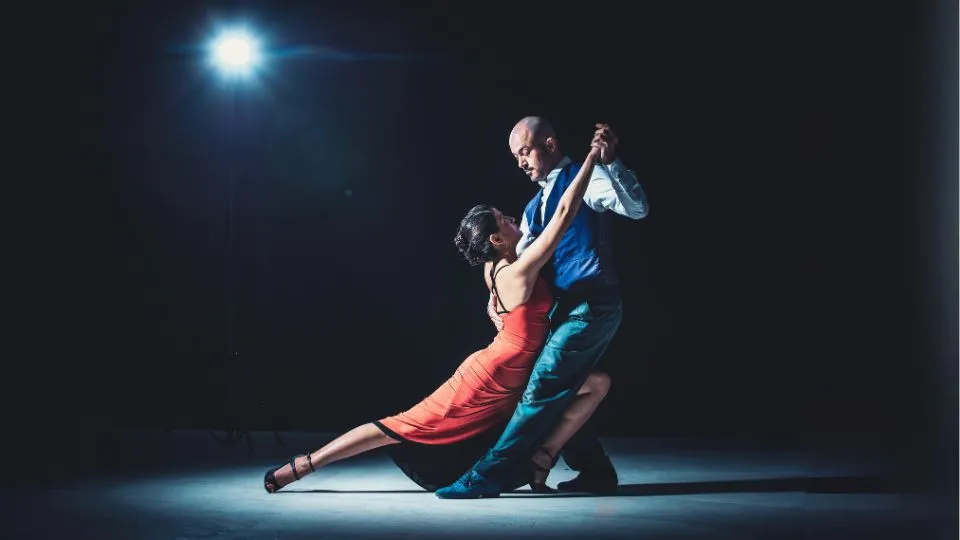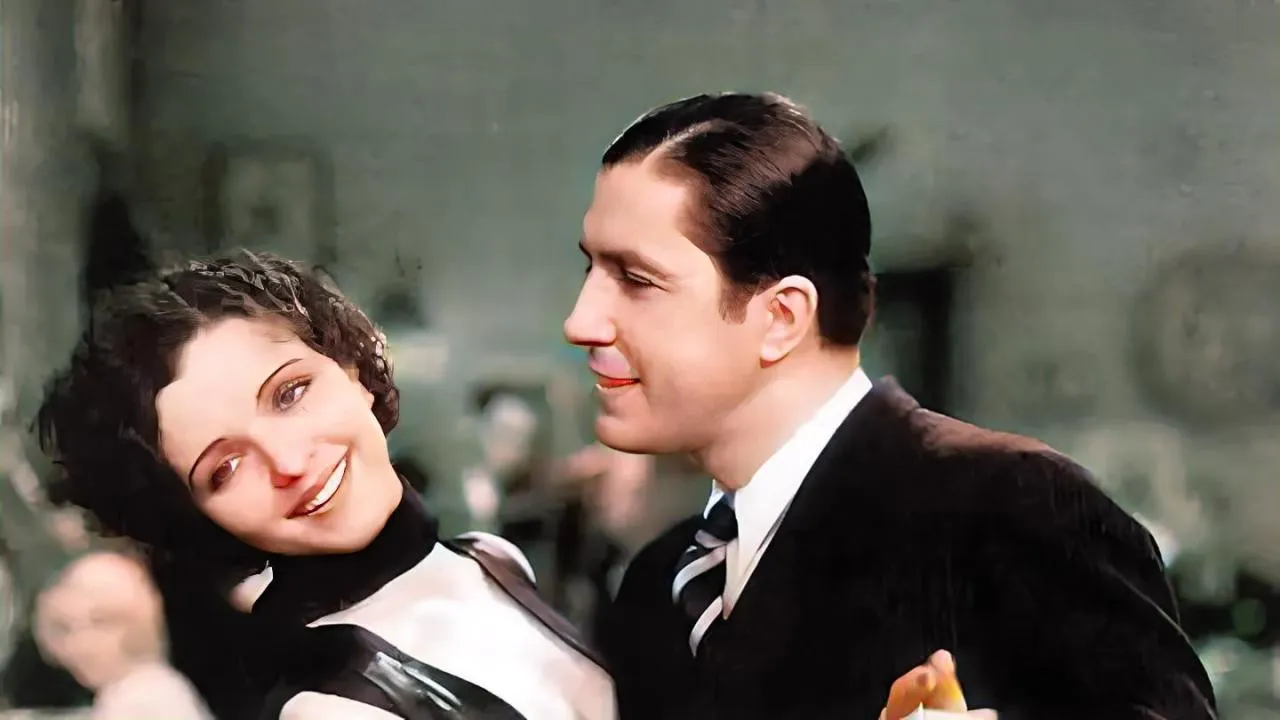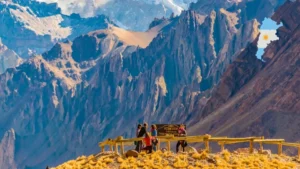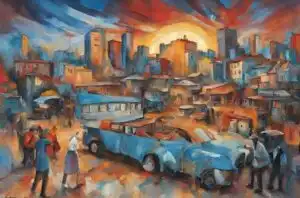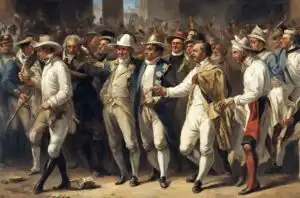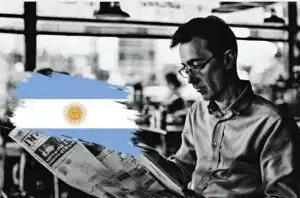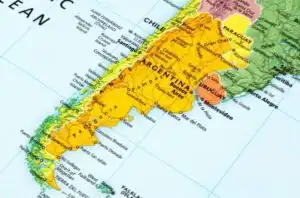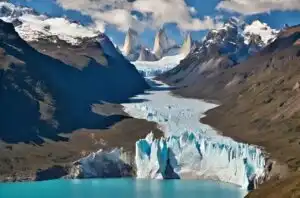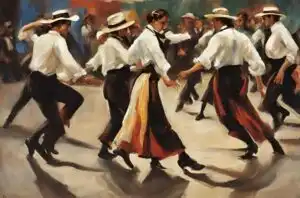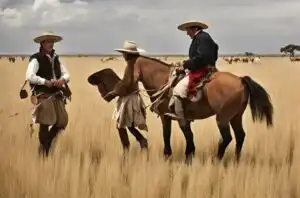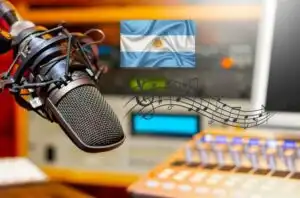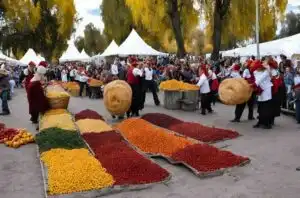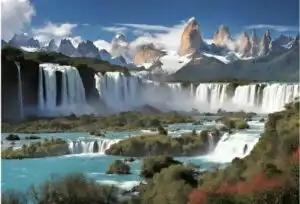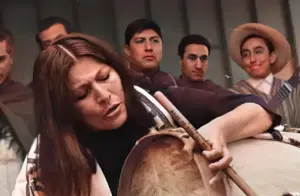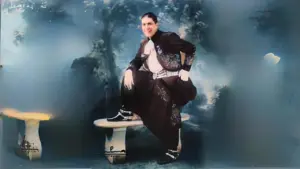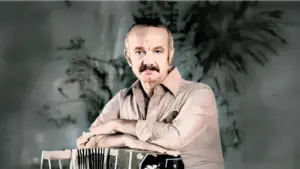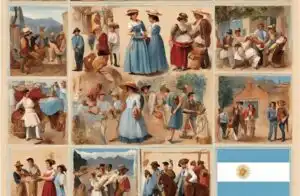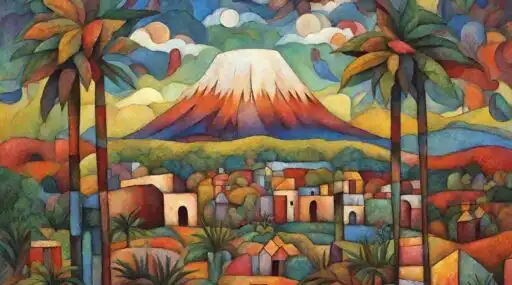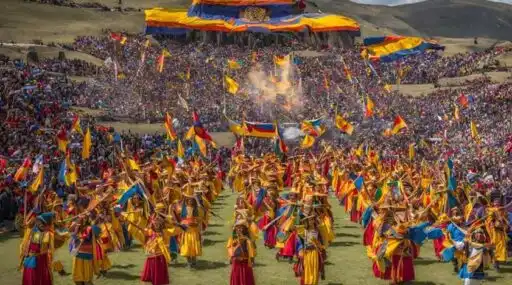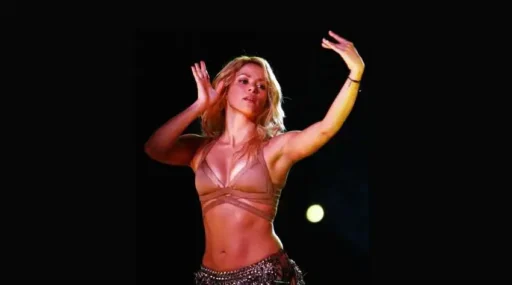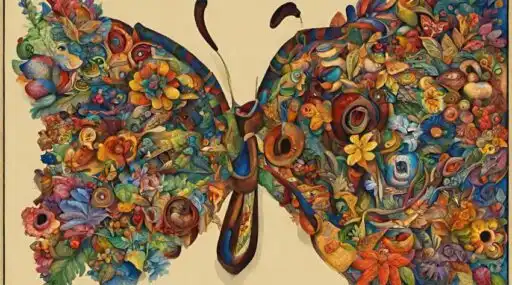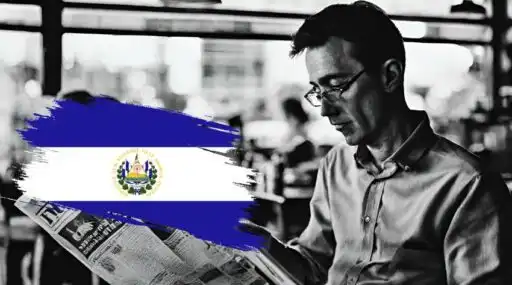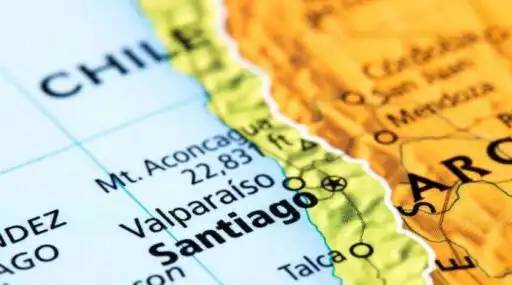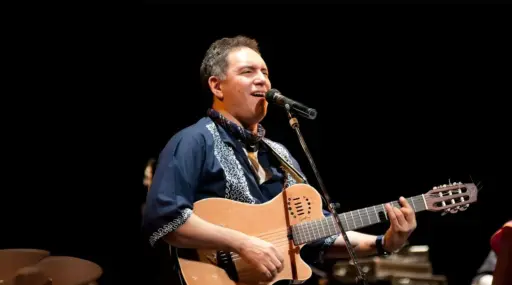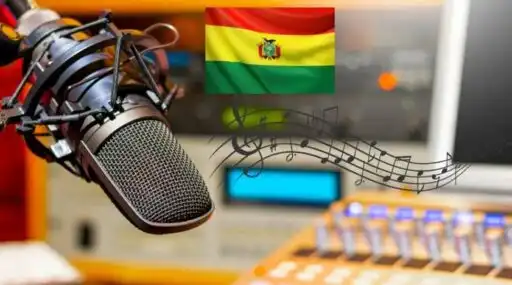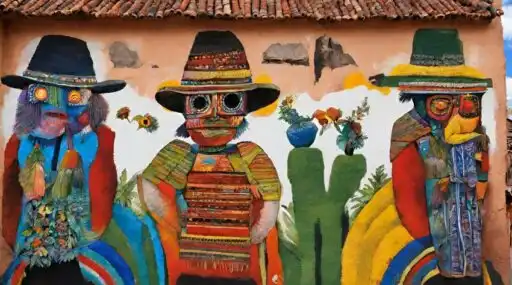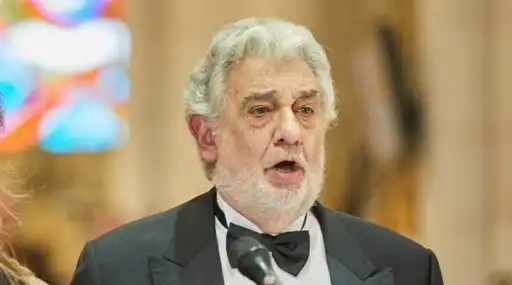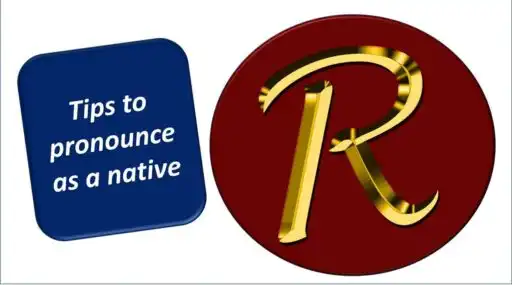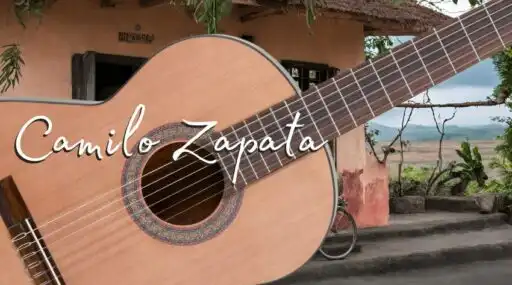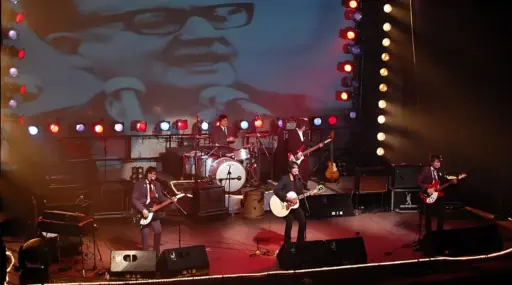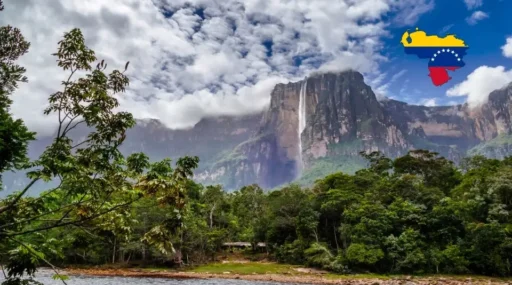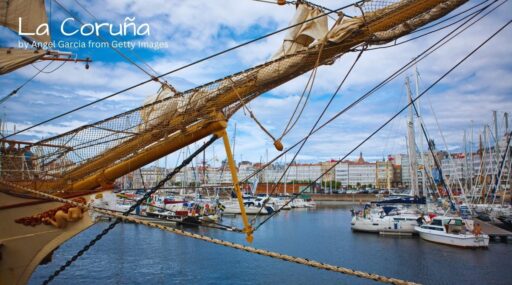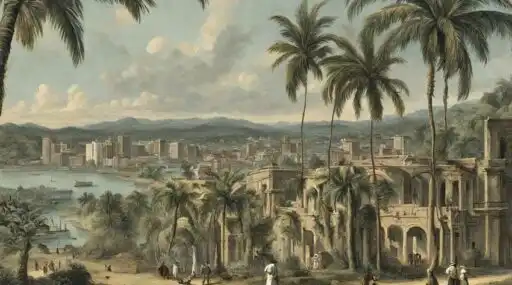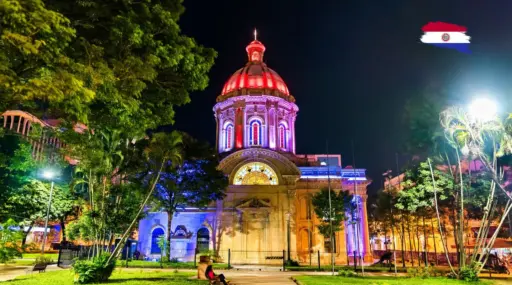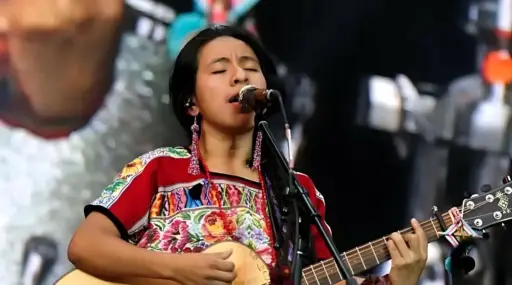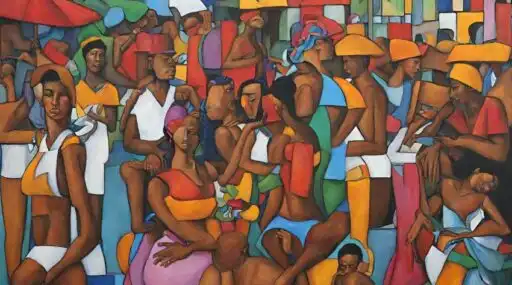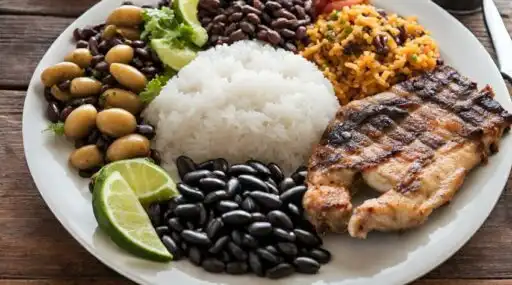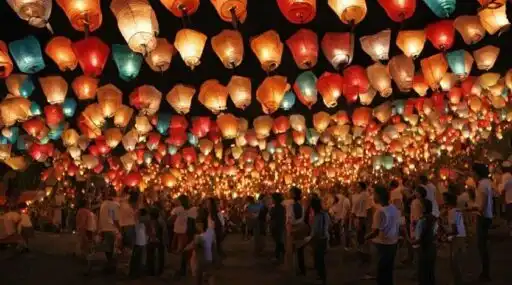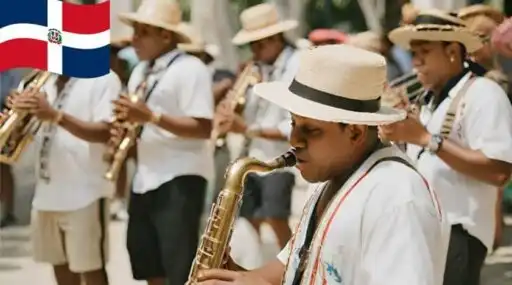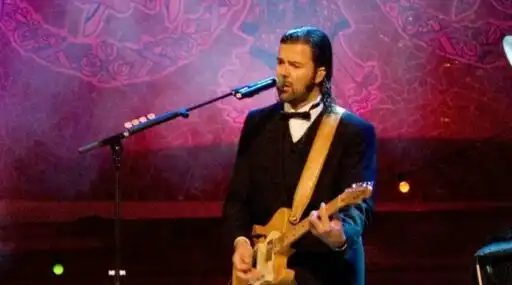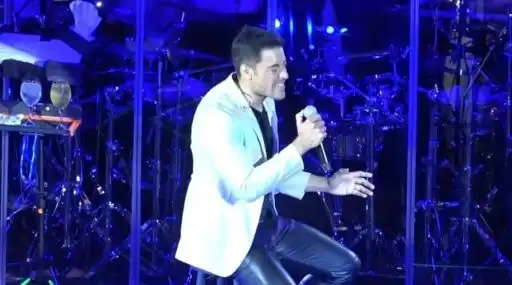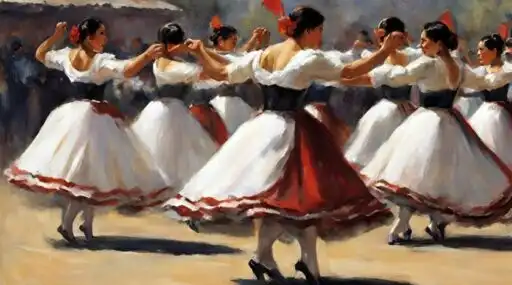Tango is a sensual and passionate dance from Argentina, the result of a wide variety of cultures.
Now you can learn to dance a tango.
This characteristic dance of the Río de la Plata region and its area of influence, but mainly from the cities of Buenos Aires (in Argentina) and Montevideo (in Uruguay).
Do you want to know more about Tango?
Born in the port of Buenos Aires between 1850 and 1890, the marginal areas or suburbs of the city, coming from dances of a great mixture of cultures.
Before this date there was no Tango as a dance itself.
Criollos and gauchos from the River Plate, sailors, Indians, Africans, and mulattoes, danced freely to music like waltzes, of Austrian and Alpine origin; pasodoble and Andalusian tango; Operetta; dances of Scottish origin; habaneras, of Cuban origin; polka; mazurkas, gang and milonga; based on the fandango and the African candombe.
It was in Afro-Rioplatense communities, in the final process of liberation from slavery, where popular dance and entertainment venues were established in the mid-19th century, called “academias” or “milongas”, where candombe was danced in the street.
These academies and milongas also received the growing presence of the wave of immigrants from the most diverse countries in Europe and the Middle East, mostly Italians.
The unusual fusion of languages, knowledge and customs generates a language, lunfardo.
Words from some Italian dialects, and from other languages brought by immigrants, are absorbed and adapted to Buenos Aires.
From this fusion of cultures the phenomenon of tango was born.
Thus, in the neighborhoods the “ arrabalero tango ” began to emerge . A dance performed in the suburbs by men and women with their bodies tightly embraced.
It was also danced between men.
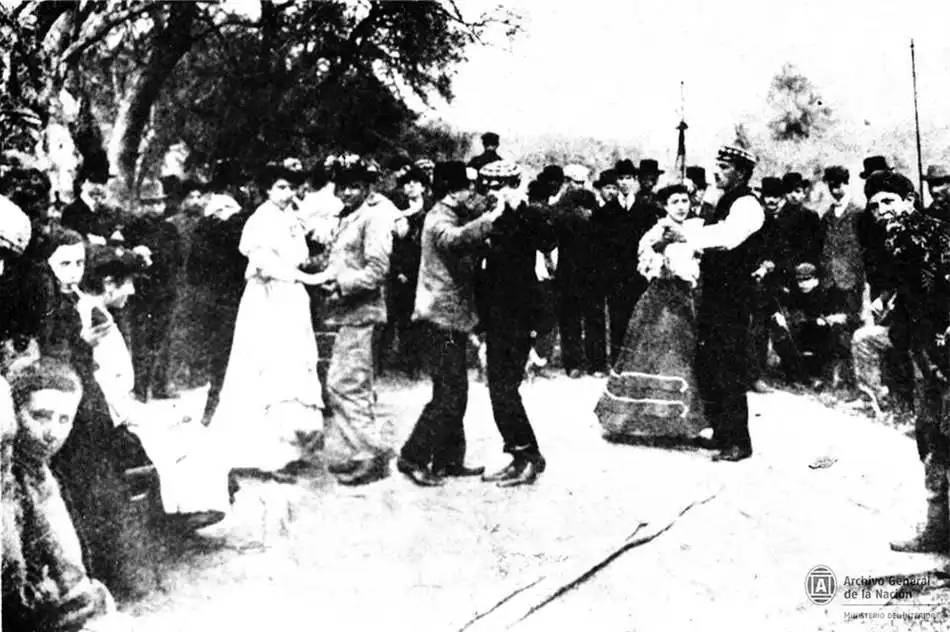
This new way of dancing quickly spread to the southern neighbourhoods, such as San Telmo and Monserrat, and was very popular in Argentine society, at that time made up of European immigrants, who contributed many of their elements of origin.
All this scandalized the society of the time, the church condemned it and it was forbidden by the police to incite scandal. Thus it was associated with lust and “non sancta” fun along with drinking and dancing.
The Afro-Porto communities could not continue marching with their candombes down the street and were forced to do so in closed places.
It was only danced in the humble social strata, those of the suburbs.
And “handsome” and suburban people slipped their feelings in dance steps of couples hugging very tight, to the sound of a melody. Tango spread through the brothels.
The most conservative strata conceived him as “vulgar”, he was socially marginalized for seeking sensuality and pleasure.
Its prohibition forced to dance it in hidden places until the arrival of the 20th century, hence its air of nostalgic passion.
It is under these conditions that the dance is transformed, merging the characteristic cuts and breaks of candombe , with the linked couple of the waltz and the mazurka , (dance in fashion in 1850, also linked couple).
Laying the characteristic bases of tango: closely linked couple, walk, cut and broken.
In Buenos Aires there are records of the arrest of four men and two women for dancing with a court in 1862.
Until the end of the 19th century, this type of dance was used in the Río de la Plata to dance different styles: mazurkas, polkas, chotis, habaneras, Andalusian tangos and milongas, in search of a style that adapted to their cadence.
Why is it called tango ?
At that time, the place where Africans met and danced was called “tango”.
In Montevideo (Uruguay), at that time, the word “tambo” was used with a similar meaning.
The oldest written document from Buenos Aires in which the word “tango” appears dates from November 11, 1802 and is a purchase-sale ticket for a meeting in the neighborhood of La Concepción (now Constitución).
First tangos as a musical genre
In this process, a new musical genre was generated, perfectly adapted to that peculiar and sensual style of dance.
Finally, this new genre appeared in the last years of the 19th century and was baptized with the same name as the meeting place: “tango”.
Official sources place “El entrerriano” (1897), by the Afro-Porteño composer and pianist Anselmo Rosendo, as the first formally created tango.
This initial way of dancing the tango is known as “ tango canyengue ”, or tango orillero or tango arrabalero .
The canyengue tango acquired the profile of a defined style, strongly marked by the cut and the broken, with a very close embrace and the bodies in contact. It is a provocative and very sensual style.
But as the tango came out of the academies, Neapolitan milongas and piringundines of the suburban night, to begin to be danced in halls and public or family areas, a new style of dancing appeared, which sought to moderate its most provocative aspects, separating the bodies but without losing the embrace and paying attention to or even eliminating cuts and tears, at least its most sensual figures.
The instruments that make tango sound like this
The instruments used at first to accompany the dance were the flute, the drum and the guitar, but the sound of the bandoneon (of German origin) was incorporated as something essential to pianos, double basses and violins, radically modifying the musical sound of tango.
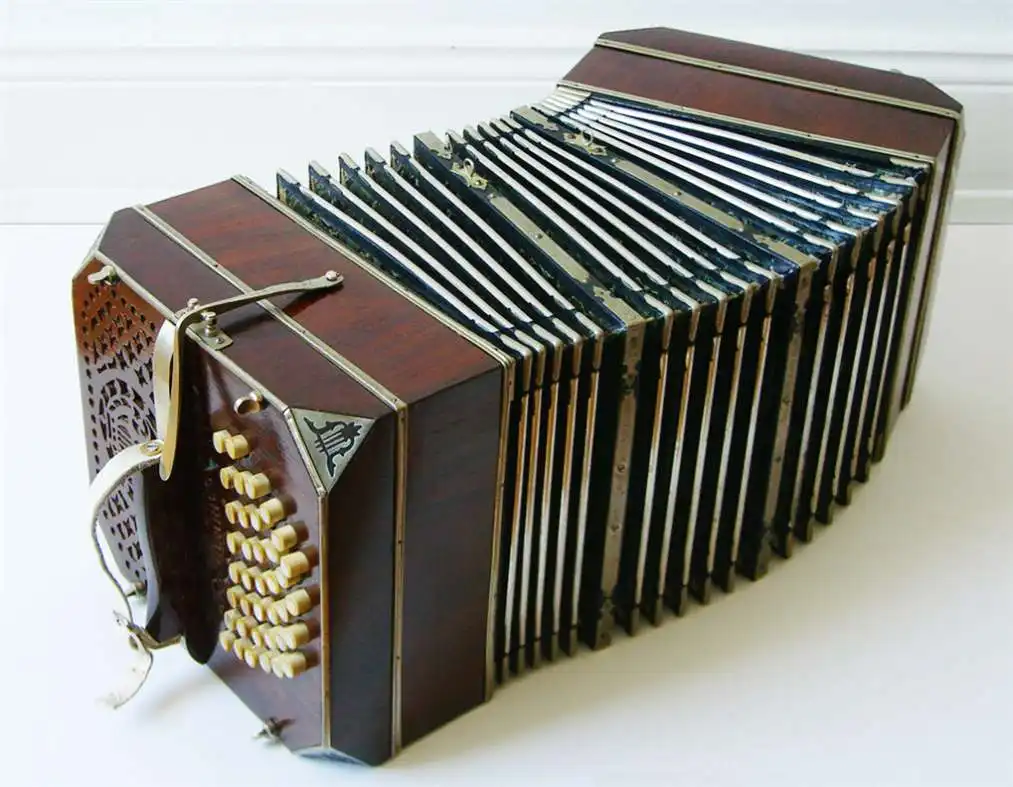
The presentation of tango in Europe
In 1910 the tango was danced in Paris, quickly expanding its popularity throughout the world.
Its glamor conquered the highest sectors of society and was danced in almost all European capitals.
Those in charge of presenting it in the halls of the old world were the young sons of traditional Buenos Aires families, who had long been frequenting the places in Buenos Aires where tango was danced, to the annoyance of Buenos Aires society, which still viewed it with bad eyes due to its scandalous history.
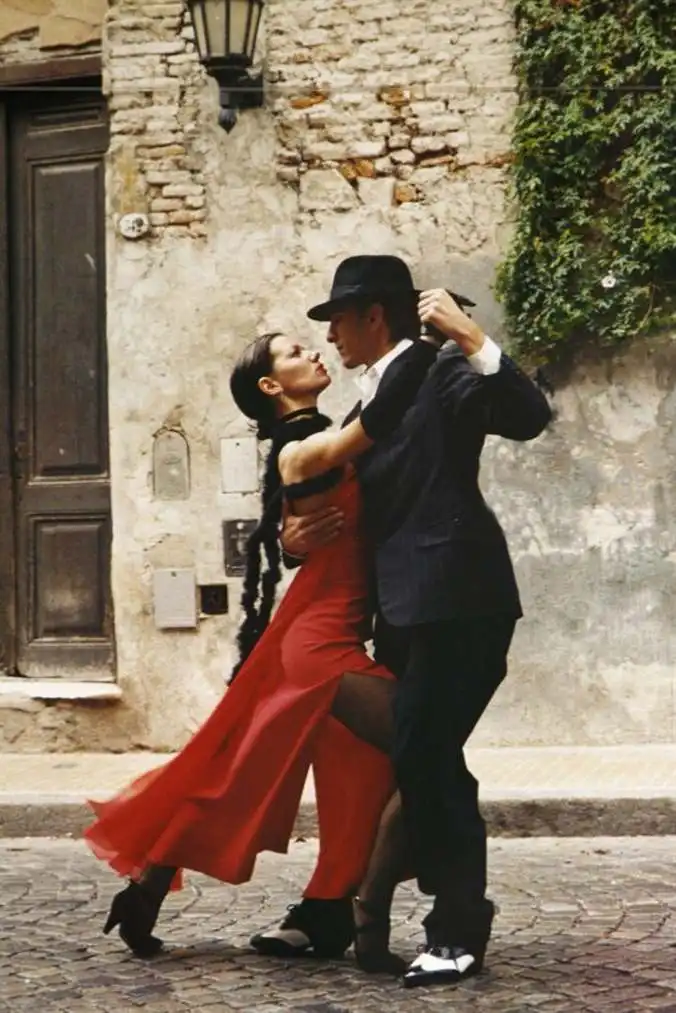
Its final acceptance took a while longer, until it was considered a need for popular expression.
The prohibitions of tango in Europe indicated the growing diffusion of the dance, especially in the central countries. Already in 1913 there was talk of the tangomania unleashed in Europe.
At the beginning of the 20th century, with its worldwide popular acceptance, dance evolved to its current form.
From the second decade of the 20th century, it received the name of salon tango or smooth tango.
The salon tango or smooth tango was based above all on the tango walk. It was basically the style that was popularly danced between the 1920s and 1950s.
Almost simultaneously with the salon tango practiced as a popular recreation, a tango danced by professionals oriented to the show appeared, which received the name of stage tango.
Stage tango uses more daring and free choreographies, often taken from other dances or physical disciplines, such as jumps and figures with loose dancers, which neither ballroom tango nor canyengue tango accept.
Tango almost ceased to be danced from the sixties in Buenos Aires.
In the 1980s, tango gained more popularity due to international recognition through several Hollywood movies .
Tango academies flourished everywhere and people from all over the world began to make pilgrimages in search of places to dance it, especially Buenos Aires, promoted by tourists as the Capital of Tango.
The evolution of his choreographies kept him alive and current; in the event that it had remained in a single form, it would have disappeared or “would be the reason for a simple scenic memory, like other forms of popular dance” (Dinzel, 1994).
Its maximum representative in the history of tango is Carlos Gardel. Gardel was a singer, composer and film actor. He was the …
When is Tango Day?
National Tango Day is celebrated on December 11. The date was proposed by Ben Molar as a tribute to the birth of two greats of the genre, Carlos Gardel and Julio de Caro.
What is Queer Tango?
In the 1980s, a movement arose in Germany, calling itself queer tango, which proposed dancing the tango without the roles being fixed to the gender of those who dance it.
Therefore, in this style, same-sex dance partners are frequent and the roles of conductor and leader are exchanged.
From Hamburg the movement spread to different parts of the world, promoted by LGBT organizations.
The Marshall is the most famous Queer Tango milonga.
Queer Tango festivals are held in Argentina, Mexico, the United States, Canada, Germany, Sweden, Spain and Denmark.
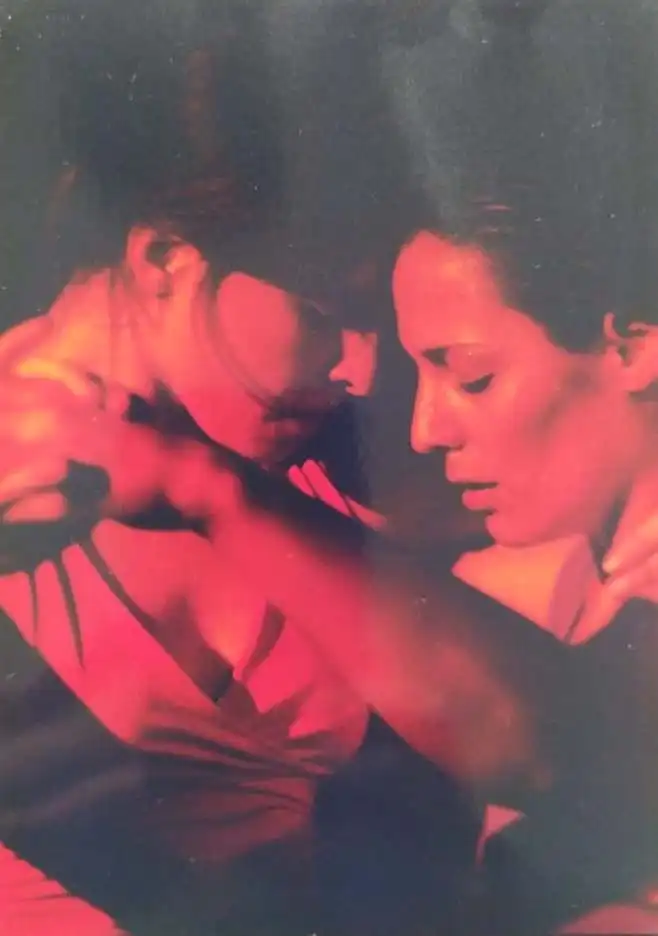
More about Tango
The word “tango” was selected to represent the letter “T” in the radio alphabet for international use.
On September 30, 2009, at the request of the cities of Buenos Aires and Montevideo, UNESCO declared it an Intangible Cultural Heritage of Humanity.
For a Head – Carlos Gardel
Thank you for “dancing” this tango with us
We hope you liked it
Tell us in the comments
You might also like tango
More information and reviews
- es.wikipedia.org-Tango. Disponible Aquí
- en.wikipedia.org-Tango. Disponible Aquí
- es.wikipedia.org-Tango (baile). Disponible Aquí
- en.wikipedia.org-Tango (baile). Disponible Aquí
- es.wikipedia.org-Bandoneón. Disponible Aquí
- en.wikipedia.org-Bandoneon. Disponible Aquí
- pixabay.com-Juancamerlingo. Disponible Aquí
- wikimediacommons-Unknown author. A group of persons dancing “tango” in Palermo, Buenos Aires. 1890. Disponible Aquí
- wikimediacommons.org-. Made by ELA for Hohner Photo: Pavel Krok. Bandoneon. Disponible Aquí
- pixabay.com-ArtTower. Disponible Aquí
- wikimediacommons.org-José María Silva. Fotografía coloreada de Carlos Gardel. Disponible Aquí
- wikimediacommons.org-Lorena Barletta. Disponible Aqui
- youtube.com- ZatanczmyPL – Wedding Dance Tutorials.The Tango Project – Por Una Cabeza | Wedding Dance Choreography (Scent of a Woman) | Tutorial. Disponible Aquí
- youtube.com-SC Entertainment. Carlos Gardel – Volver (Lyric video) [HQ Audio]. Disponible Aquí
- youtube.com-Por una cabeza – Carlos Gardel. Disponible Aquí
- youtube.com-Argentine Tango Radio. Argentine tango flash mob – Budapest, with bandoneon & dancing. Disponible Aquí


